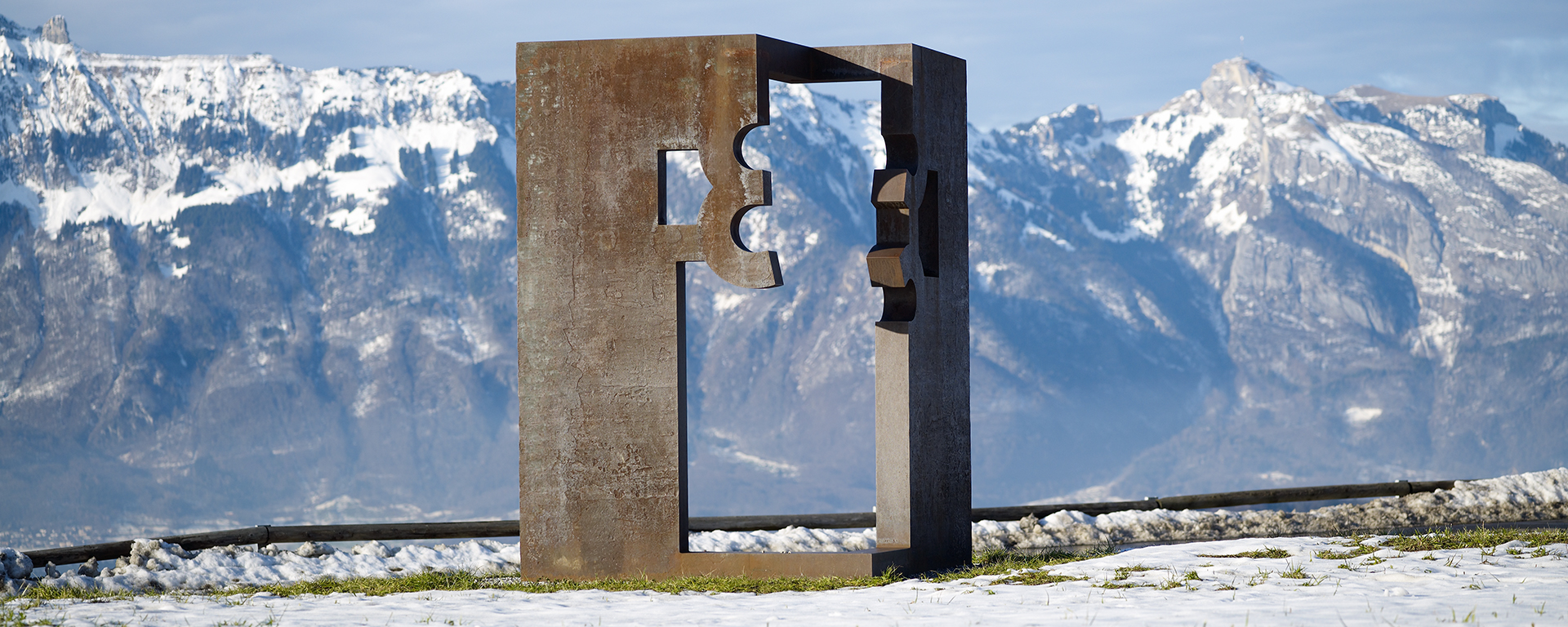Eduardo Chillida (1924–2002), born in San Sebastián, was one of the 20th century's trail-blazing sculptors. The self-taught artist, who initially studied architecture, cannot be definitively categorised. He pursued a path of his own and remained a loner his whole life long, albeit with a great public presence. This is the result of his monuments in the public domain dedicated to important personalities, but also to the humanist values he cherished, such as tolerance, fraternity and freedom. Today his works are to be found worldwide in many important public places, where they often stimulate debate: in front of the Federal Chancellery in Berlin, in Houston, Barcelona, Paris – and now in Planken (Liechtenstein).
Chillida was always preoccupied with 'space' and its interaction with time. He constantly sought to eschew the laws of geometry, symmetry and gravity in his sculptures and to give expression to space. By means of dark anthropomorphous and asymmetrical masses Chillida created inner spaces that lend an intellectual dynamism to places and at the centre of which emptiness can unfold. "Space? I could compare it with breath, that makes a form swell and then retract, that opens up the space in that form for a vision ... causing the surrounding matter to move ... It must find its correspondences, its echo, in us, it must possess a kind of spiritual dimension." The theme of space was fundamental to Chillida and is reflected not only in the three-dimensional works, but also in his prints, on the plane of the paper.
In La Puerta de la Libertad (Gate of Freedom), 1983, Chillida plays with the motif of the leaves of a door or gate. Two compact steel plates are linked by means of two brackets, the lower of which prolongs the direction of the steel plates, while, by contrast, the upper one is directed inwards, thus running in the opposite direction. This creates – by way of the slightly asymmetrically arranged brackets – an empty inner space. Possible associations are with the entrance to a house or with the prow of a ship. This opening door hovers between inner and outer space. Visible through the dark steel plates is the bright centre that focuses our gaze on nature in the distance. A gate – as the title reinforces – that invites us to reflect on inner and outer freedom.
This exhibition project is part of a series in which local communities are enabled to mount an exhibition of their own using selected works from the collection of the Kunstmuseum Liechtenstein.

